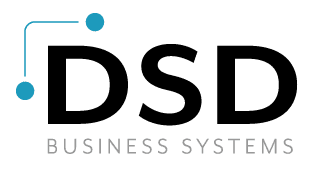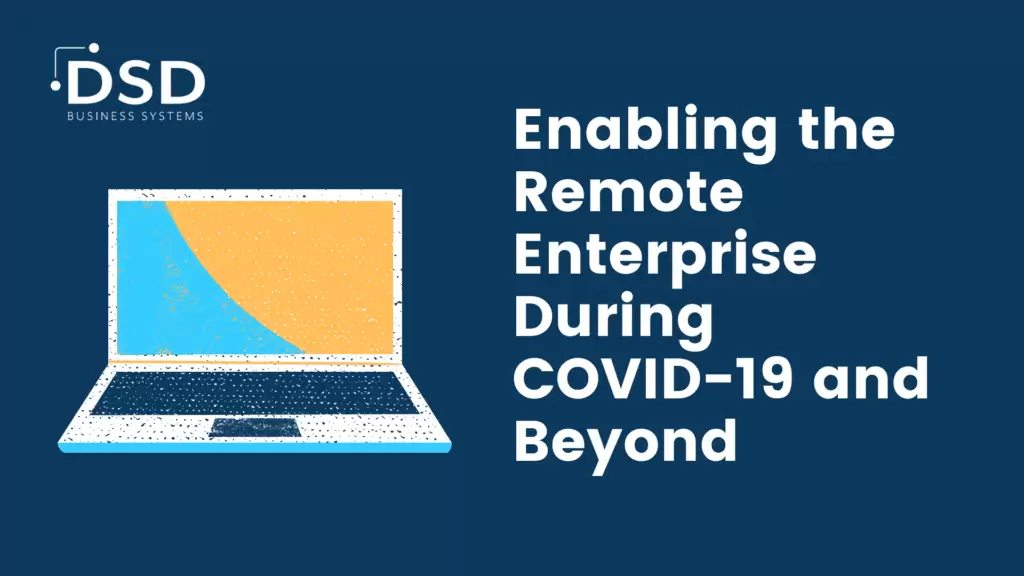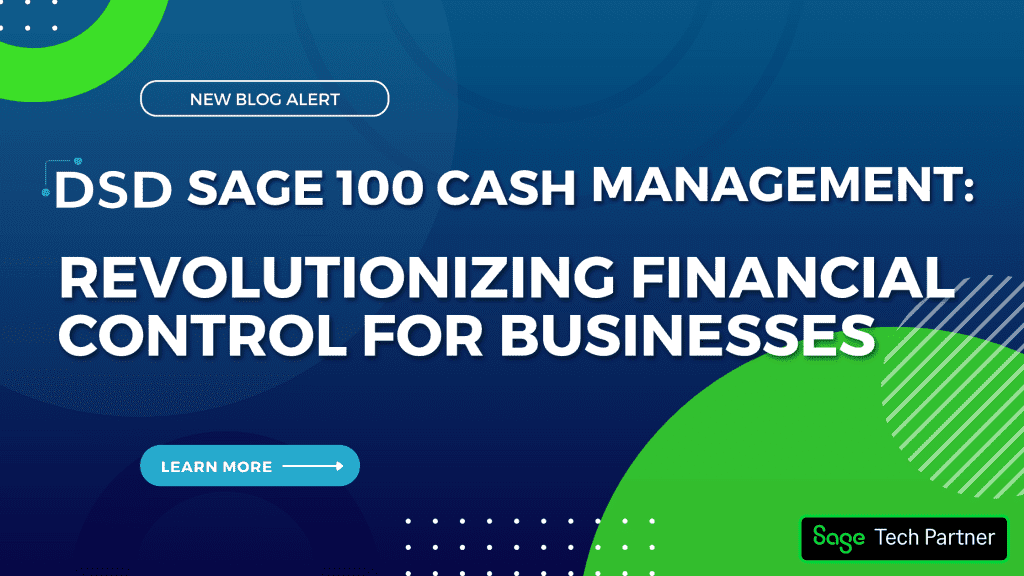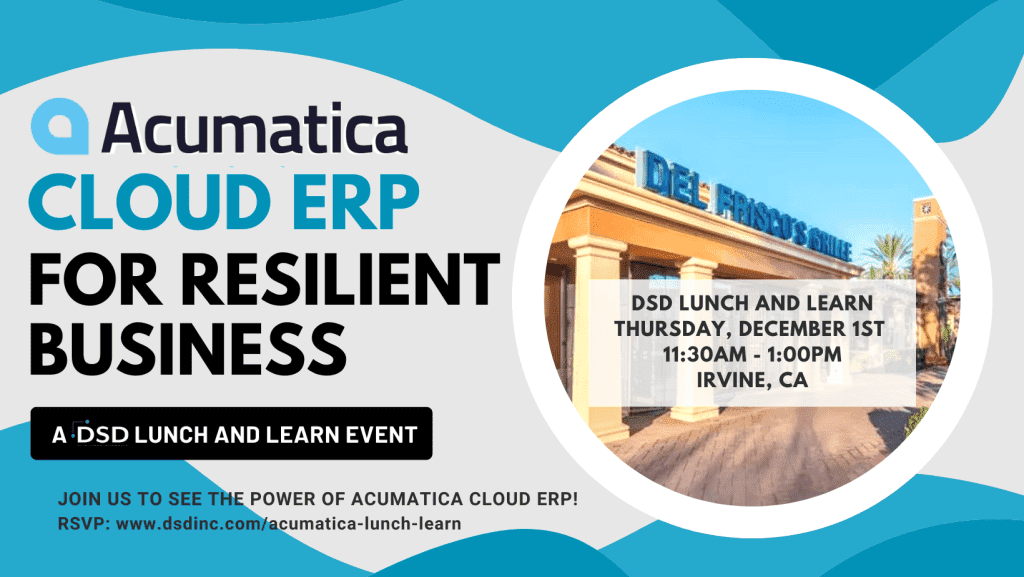Enabling the Remote Enterprise During COVID-19 and Beyond
April 14, 2020
The COVID-19 outbreak has produced some unprecedented responses, including the shutting down of businesses across the globe. Enabling a remote enterprise is fast becoming priority #1, and Acumatica’s Director of Product Marketing , Divya Ganesh, explains how technology, specifically Acumatica’s cloud ERP solution, can help.
Besides ‘COVID-19’, there is one word you’ll hear over and over again on the news: ‘unprecedented’—as in the unprecedented response to the lightning-fast spread of the coronavirus, which includes a global lockdown in an effort to stop the outbreak.
The lockdown has closed the physical locations of many non-essential businesses. Across the country, America’s largest employers have responded with various policies to keep their businesses running and to support their employees and customers—like bonuses, customer accommodations, community relief funds, and paid sick leave. Additionally, and at the time of this post, over half of businesses (Target, Amazon, and CVS, to name a few) have responded with work-from-home policies.
To enable a remote enterprise and to ensure business continuity, these businesses are turning to modern management technology, such as cloud ERP.
Cloud ERP technology enables remote enterprise
In a recent CIO article about COVID-19’s impact on the enterprise and remote work, Kris Lahiri, co-founder and CISO of Egnyte, says organizations need to provide remote employees with collaboration tools and technology. “Pandemics and natural disasters put corporations behind the eight ball, but organizations that can maintain access to critical business content and collaboration processes…are in a good position to deal with these,” he said.
Turning to technology will prove relatively painless for companies in the technology and information industry. Unicorn startup GitLab, for example, has maintained a fully remote policy across its entire workforce. The company recently published a survey that found 26% of remote workers are employed by organizations that are 100% remote.
Even non-technology organizations have been gradually shifting investment toward activities related to the creation of digital IP. Powerful laptops, low-cost monitors, high-resolution cameras, and SaaS-based communication and collaboration tools are helping facilitate the transition. Equally important are the advances in underlying technology infrastructure such as hybrid computing, cloud file storage, high-speed networking and endpoint security systems.
With today’s unforeseen circumstances, this shift towards digital IP will need to kick into high gear. Having remote employees is no longer just a possibility, it’s fast becoming a requirement, and modern cloud ERP technology such as Acumatica’s can make it easier. Remote access is an inherent feature of Acumatica cloud ERP. Acumatica customers have the ability to access their ERP data and connected modules from anywhere, at any time, from any device, and they are able to perform their unique business management processes without disruption.
But that’s not all. There are many more benefits to working remotely using cloud ERP software.
The benefits of working remotely
Richard Branson, founder and chairman of Virgin, has promoted the benefits of working remotely for years, writing in a 2013 post, “If you provide the right technology to keep in touch, maintain regular communication and get the right balance between remote and office working, people will be motivated to work responsibly, quickly and with high quality. Yours truly has never worked out of an office and never will.”
With the exception of the remote-office work balance (a situation businesses can’t control right now), he is spot on. He also writes, “Working life isn’t 9-5 anymore. The world is connected. Companies that do not embrace this are missing a trick.”
At the very least, they are missing out on the benefits above. In Why Mobility Matters in Cloud ERP, Acumatica’s Michaela Terrenzio notes other benefits, including increased productivity and data accuracy for organizations with field employees, who can enter data immediately rather than waiting until they return to the office. Being able to access the data with real-time visibility allows for better—and faster—decision making, more satisfied customers, and a boosted bottom line.
In fact, the benefits of working from home will cause many organizations to continue the practice even after the crisis has passed. Video conferences and meetings can reduce corporate travel, while having a remote workforce can lessen the need for real estate in densely populated city centers. Additionally, many remote-work companies, especially small businesses, cite the advantages of being able to hire candidates from anywhere. Finally, businesses may view working from home as a smart long-term strategy when it comes to continuity planning or reducing carbon footprints.
Cloud ERP: modern management software critical for today’s businesses
Modern management software is critical in understanding how recent disruptions impact businesses in every industry. Thankfully, CRM, ERP and supply chain software have evolved dramatically in recent years, helping firms improve visibility into customer and supplier channels to respond to changes in underlying business conditions.
This has been particularly notable in the current crisis, as businesses can quickly inform customers of product shortages, cancellations and potential refund procedures—something they can continue to do remotely.
Contact our DSD team about implementing Acumatica’s cloud-based ERP solution to become a remote-based, connected business today and beyond. Rest assured, we are committed to ensuring business continuity for our customers and would love to do the same for you.
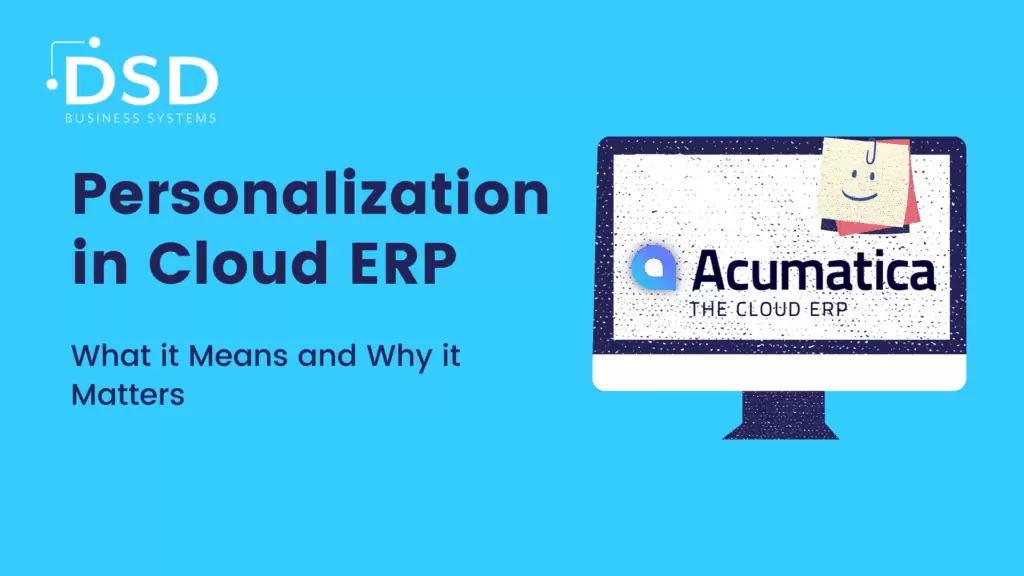
When describing technology priorities, Acumatica cloud ERP uses three pillars: User Experience, Automation, and Personalization, in that order. The Acumatica executive team, walked Acumatica Summit 2020 attendees through this “technology priority trifecta” during the Day 2 Keynote, and today, we’ll look at cloud ERP personalization—what it means for you as a small to midsize business (SMB) and why it matters in the context of your success.
The evolution of cloud ERP personalization
Looking back, the evolution of personalization began with ‘configuration’. The configuration is a necessary action before you begin using the system. You must configure the language, currency, time zone, etc. needed for your particular environment.
The next step in evolution is ‘customization’. I’m probably not alone in thinking customization is a dirty word in the cloud ERP space, and decision-makers fear custom code, development delays, issues with upgrades, and more. While not a requirement (like configuration), customization of your cloud ERP solution is a way SMBs can increase their cloud ERP usability based on their specific business management processes and needs. This includes integrating with third-party applications (think Smartsheet and Adobe Sign), which extends their functionality even further.
Following closely on the heels of customization is the age of cloud ERP personalization.
During the Day Two Keynote, Acumatica CTO Mike Chtchelkonogov defined personalization as “adjusting the software right for the customer’s needs, making it work for the customer the best way so they don’t even know it exists.” This seamless personalization is visible in our most recent release, Acumatica 2020 R1. And the process by which it occurs is through what we call a “low code or no-code” principle.
Low code, no-code personalization allows users such as yourself to affect change within your cloud ERP solution. No programmer or developer needed. Without writing a single line of code, you can:
- Modify tab order and visibility
- Define field valid values
- Import data faster and easier
- Add side panels to data screens to speed data entry
Personalization is all about relevancy (and it matters)
Personalization takes configuration and customization a step further. It’s all about relevancy—what’s meaningful to you as an SMB, including the reports, KPIs, charts, and more that will help your business succeed. And you can make the solution yours without relying on an army of developers.
With Acumatica’s cloud-based ERP, you have cloud ERP personalization capabilities. Need a dashboard? Build one. Want to dynamically define field valid values? Do it.
That’s what Dan Wilkins, President of Bell and Company, a family-run industrial and marine supply distributor, did after they chose Acumatica over Infor and SAP. “You’re able to do a lot of it yourself. You don’t need a networking background, and you don’t need programming knowledge.”
The low code, no-code personalization meant they made Acumatica’s cloud ERP software work for them rather than adapting their workflows to make it work for the software. This was exactly what the company needed to grow their business.
“You often hear about the complexity of ERP systems,” Dan says in the company’s customer success video. “With Acumatica, I think we got the full capability of an ERP with the simplicity that allows not only me but our whole sales force to take advantage of the system.”
Acumatica has been hailed as the standard setter for usability. For four years in a row, Acumatica has held the position as Leader and the vendor with the highest usability (represented by mobility, flexibility, and user adoption) out of 22 leading vendors.
And Acumatica has been called a Leader, Champion, and a very popular cloud ERP choice by actual users. You can read their reviews for yourself.
If you’re ready to implement a solution that leads in both cloud ERP usability and cloud ERP personalization (which means you have the power to mold your cloud ERP application to fit your specifications rather than the other way around), then you’ll want to contact our team today. Having a tailored, scalable system matters and is fast becoming a requirement for long-term success.
Learn how to begin the process of ERP selection in line with your company’s needs, timeline, and budget.
